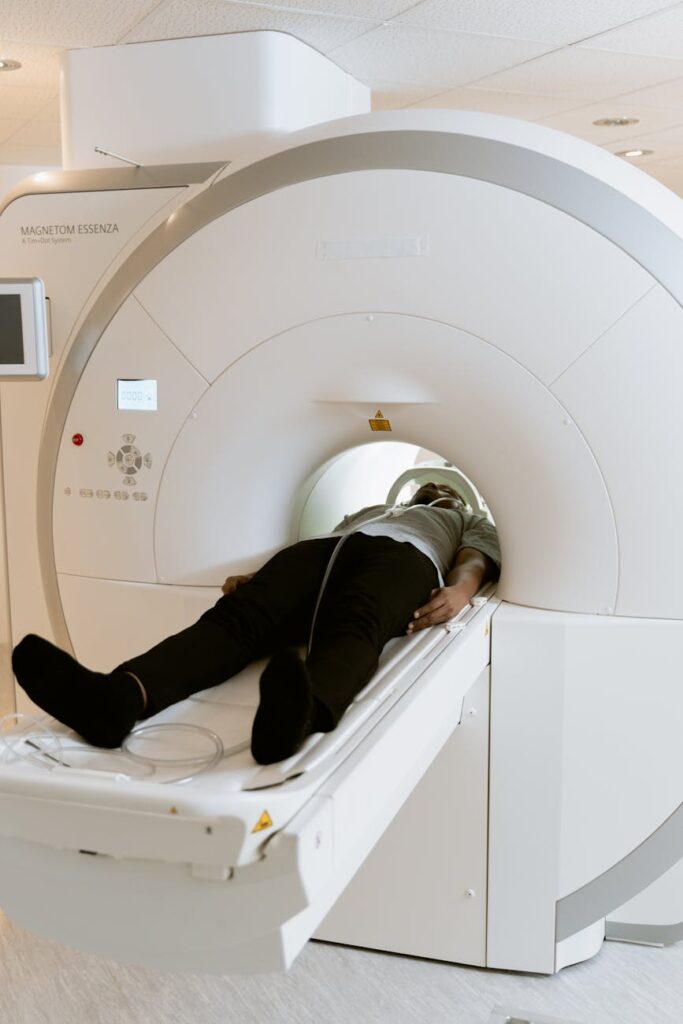
The landscape of healthcare is undergoing a profound transformation, driven by the rapid advancement of artificial intelligence (AI) and machine learning (ML).
These powerful technologies are not merely theoretical concepts; they are actively reshaping the way we approach disease diagnosis, promising to enhance accuracy, speed, and efficiency while potentially democratizing access to specialized medical expertise. From detecting subtle anomalies in medical images to predicting disease risk based on complex patient data, AI and ML are poised to revolutionize the diagnostic process, ushering in an era of personalized and proactive healthcare. This essay will explore the multifaceted applications of AI and ML in disease diagnosis, examining their potential benefits, challenges, and the ethical considerations that must be addressed to ensure responsible and equitable implementation.
The Power of Pattern Recognition:
At the core of AI and ML’s diagnostic capabilities lies their ability to recognize complex patterns in vast datasets. Traditional diagnostic methods often rely on human interpretation of medical data, which can be subjective and prone to errors. AI and ML algorithms, on the other hand, can process and analyze massive amounts of data, including medical images, electronic health records (EHRs), and genomic data. This ability to extract meaningful insights from complex data is particularly valuable in the diagnosis of diseases characterized by subtle or complex patterns, such as cancer, neurological disorders, and cardiovascular diseases.
Applications Across Medical Disciplines:
AI and ML are being applied across a wide range of medical disciplines, demonstrating their versatility and potential to improve diagnostic accuracy and efficiency:
Medical Imaging: AI algorithms are proving remarkably adept at analyzing medical images, such as X-rays, CT scans, and MRIs, to detect abnormalities that may indicate disease. For example, AI-powered systems can detect early signs of lung cancer in CT scans, identify diabetic retinopathy in retinal images, and classify skin lesions as benign or malignant. Deep learning, a subset of ML, is particularly effective in image analysis, enabling the development of highly accurate diagnostic tools.
Pathology: AI algorithms can analyze digital pathology slides to identify cancer cells, classify tumors, and predict disease prognosis. This automation not only improves diagnostic accuracy but also reduces the workload of pathologists, allowing them to focus on more complex cases.
Genomics: AI and ML are playing a crucial role in analyzing genomic data to identify genetic mutations associated with disease. These technologies can help predict an individual’s risk of developing certain diseases, such as cancer and Alzheimer’s disease, and guide personalized treatment decisions.
Electronic Health Records (EHRs): EHRs contain a wealth of patient data, including medical history, laboratory results, and medication records. AI and ML algorithms can analyze this data to identify patterns that may indicate disease risk, predict disease progression, and personalize treatment plans.
Cardiovascular Disease: AI is being used to analyze electrocardiograms (ECGs) and other cardiac data to detect arrhythmias, predict heart attacks, and assess cardiovascular risk. AI-powered systems can also analyze echocardiograms to assess heart function and detect structural abnormalities.
Neurological Disorders: AI is being applied to the diagnosis of neurological disorders, such as Alzheimer’s disease, Parkinson’s disease, and multiple sclerosis. AI algorithms can analyze brain images, cognitive tests, and other neurological data to detect early signs of these disorders and track disease progression.
Infectious Diseases: AI is being used to analyze microbial genomes and epidemiological data to track the spread of infectious diseases, identify outbreaks, and predict drug resistance. During pandemics, AI can be used to analyze large amount of data to help with resource allocation and prediction of disease spread.
The adoption of AI and ML in disease diagnosis offers several potential benefits:
Improved Accuracy: AI and ML algorithms can analyze vast amounts of data to identify subtle patterns that may be missed by the human eye, leading to more accurate diagnoses.
Increased Efficiency: AI-powered systems can automate many diagnostic tasks, reducing the workload of healthcare professionals and improving the efficiency of the diagnostic process.
Early Detection: AI algorithms can detect early signs of disease, enabling earlier intervention and potentially improving patient outcomes.
Personalized Medicine: AI and ML can analyze individual patient data to personalize treatment plans and predict disease risk, leading to more effective and targeted therapies.
Democratization of Healthcare: AI-powered diagnostic tools can be deployed in remote or underserved areas, providing access to specialized medical expertise that may otherwise be unavailable.
Challenges and Ethical Considerations:
Despite the immense potential of AI and ML in disease diagnosis, several challenges and ethical considerations must be addressed:
Data Privacy and Security: The use of AI and ML in healthcare requires access to vast amounts of sensitive patient data, raising concerns about data privacy and security. Robust data protection measures are essential to ensure patient confidentiality.
Algorithmic Bias: AI algorithms can be biased if they are trained on data that is not representative of the population as a whole. This can lead to disparities in diagnostic accuracy and treatment outcomes. It is crucial to develop algorithms that are fair and equitable.
Explainability and Transparency: Many AI algorithms, particularly deep learning models, are “black boxes,” meaning that it is difficult to understand how they arrive at their conclusions. This lack of explainability can make it difficult for healthcare professionals to trust and interpret the results of AI-powered diagnostic tools.
Regulatory Framework: The rapid development of AI and ML technologies has outpaced the development of regulatory frameworks. Clear guidelines and standards are needed to ensure the safe and responsible use of these technologies in healthcare.
Impact on Healthcare Professionals: The adoption of AI and ML in disease diagnosis may lead to changes in the roles and responsibilities of healthcare professionals. It is essential to provide adequate training and support to help healthcare professionals adapt to these changes. Ethical implications of automated decisions: When AI begins making decisions regarding patient care, there must be a clear understanding of liability, and a clear path for human oversight.
The Future of AI and ML in Disease Diagnosis:
The future of AI and ML in disease diagnosis is bright. As these technologies continue to evolve, we can expect to see even more innovative applications that will transform the way we approach healthcare. The development of more explainable and transparent AI algorithms will increase trust and adoption. The integration of AI and ML into clinical workflows will streamline the diagnostic process and improve patient outcomes. The use of AI and ML in personalized medicine will enable more targeted and effective therapies. And, crucially, the ethical considerations will continue to be refined and addressed.
The algorithmic revolution is underway, and AI and ML are poised to play a central role in shaping the future of disease diagnosis. By addressing the challenges and ethical considerations, we can harness the power of these technologies to create a more accurate, efficient, and equitable healthcare system for all.


